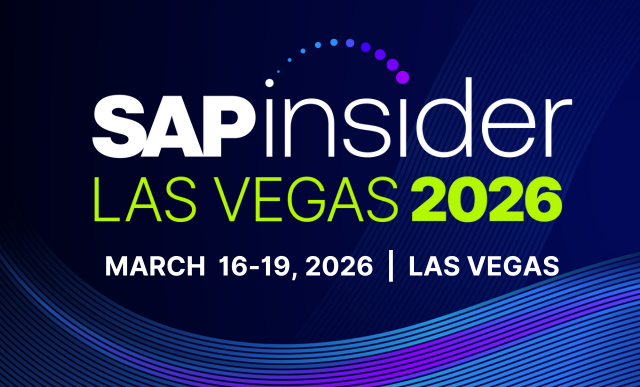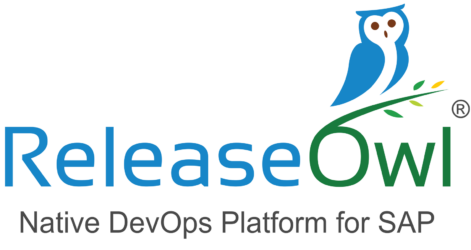SAP Administration
Filter By
Browse By
- SAP Analytics and AI
- SAP Application Development and Integration
- All SAP Application Development and Integration
- SAP ABAP
- SAP ABAP Development Tools
- SAP ABAP Test Cockpit
- SAP API Management
- SAP BAPI
- SAP Basis
- SAP BRF
- SAP Business Application Studio
- SAP CMS
- SAP Design Studio
- SAP Development Tools
- SAP DevOps
- SAP EAI
- SAP EDI
- SAP Extension Suite
- SAP Fiori
- SAP Fiori Elements
- SAP Integration Suite
- SAP Low Code Application Development
- SAP Low Code Automation
- SAP Netweaver
- SAP Release Management
- SAP UI5
- SAP Web Application Server
- SAP Web IDE
- SAP Business Process Management
- SAP Center of Excellence
- SAP CIO
- SAP Customer Experience
- SAP Data and Data Management
- All SAP Data and Data Management
- SAP BW
- SAP BW/4HANA
- SAP Crystal Reports
- SAP Data Archiving
- SAP Data Center
- SAP Data Governance
- SAP Data Integration
- SAP Data Migration
- SAP Data Quality
- SAP Data Services
- SAP Data Strategy
- SAP Data Visualization
- SAP Data Warehouse Cloud
- SAP DMS
- SAP Document Control
- SAP EIM
- SAP ETL
- SAP ETL Tools
- SAP HANA
- SAP HANA Administration
- SAP HANA Deployment Infrastructure
- SAP HANA Studio
- SAP Master Data
- SAP Master Data Governance
- SAP MDM
- SAP Enterprise Architect
- SAP Enterprise Asset Management
- SAP ERP
- SAP Finance
- All SAP Finance
- SAP Accounting
- SAP AR AP
- SAP Asset Accounting
- SAP Billing Systems
- SAP BPC
- SAP BRIM
- SAP Cash Management
- SAP Central Finance
- SAP Controlling
- SAP COPA
- SAP Cost Center Accounting
- SAP Currency Risk
- SAP e-invoicing
- SAP FICO
- SAP Finance Automation
- SAP Advanced Financial Closing
- SAP Financial Consolidation
- SAP Financial Planning
- SAP FX Risk
- SAP General Ledger
- SAP Global Tax Management
- SAP Hyperion
- SAP Order to Cash
- SAP Payment Processing
- SAP Profitability Analysis
- SAP Rebate Management
- SAP S/4HANA Finance
- SAP SWIFT Compliance
- SAP Treasury Management
- SAP Universal Journal
- SAP Governance Risk and Compliance
- SAP Human Capital Management
- SAP Intelligent Technologies
- SAP Platform and Technology
- All SAP Platform and Technology
- SAP Business Technology Platform
- SAP Cloud
- SAP Cloud Connector
- SAP Cloud Integration Platform
- SAP Cloud Migration
- SAP Cloud Platform
- SAP Cloud Providers
- SAP Cloud Strategy
- SAP Digital Signature
- SAP Container Platform
- SAP HANA Enterprise Cloud
- SAP Digital Asset Management
- SAP Smart Forms
- SAP HEC
- SAP Digital Integration Hub
- SAP Hyperscalers
- SAP Infrastructure
- SAP Messaging
- SAP Quality and Testing
- SAP Security
- SAP Spend Management
- SAP Supply Chain Management
- All SAP Supply Chain Management
- SAP APO
- SAP Asset Management
- SAP Business Network
- SAP Digital Manufacturing Cloud
- SAP Digital Twin
- SAP EWM
- SAP IBP
- SAP Inventory Management
- SAP Label Printing
- SAP Logistics
- SAP Manufacturing
- SAP Manufacturing Automation
- SAP MES
- SAP MII
- SAP MM
- SAP MRO
- SAP MRP
- SAP Order Management
- SAP Plant Maintenance
- SAP PLM
- SAP Production Planning
- SAP S&OP
- SAP SD
- SAP SPM
- SAP Supply Chain Planning
- SAP Track and Trace
- SAP Transportation Management
- SAP System Administration
What Is Administration?
System administration is the upkeep, configuration, and reliable operation of computer systems, especially multi-user computers, such as servers. Administration ensures uptime, performance, resources, and security of computers and servers while staying within a set budget.
What Is SAP Administration?
SAP administration ensures the reliability, performance, management, and support of the SAP application environments. SAP administrator responsibilities include application and system management, problem response, and capacity planning. They understand the technical infrastructure standards and requirements for integrating specific SAP modules.
SAP Basis is the system administration platform for SAP environments. The SAP Basis administrator is responsible for:
- Daily maintenance — review logs, troubleshoot problems, ensure system functioning.
- Job scheduling — schedule automatic backup jobs to be performed when user demand is low.
- Planning — adjust the SAP landscape before users are impacted, anticipate long-term trends.
- Projects — plan and execute system upgrades and migrations, test software updates to ensure compatibility with the SAP landscape.
What Is Administration?
System administration is the upkeep, configuration, and reliable operation of computer systems, especially multi-user computers, such as servers. Administration ensures uptime, performance, resources, and security of computers and servers while staying within a set budget.
What Is SAP Administration?
SAP administration ensures the reliability, performance, management, and support of the SAP application environments. SAP administrator responsibilities include application and system management, problem response, and capacity planning. They understand the technical infrastructure standards and requirements for integrating specific SAP modules.
SAP Basis is the system administration platform for SAP environments. The SAP Basis administrator is responsible for:
- Daily maintenance — review logs, troubleshoot problems, ensure system functioning.
- Job scheduling — schedule automatic backup jobs to be performed when user demand is low.
- Planning — adjust the SAP landscape before users are impacted, anticipate long-term trends.
- Projects — plan and execute system upgrades and migrations, test software updates to ensure compatibility with the SAP landscape.
A Basis administrator can also play a role in cost control, IT strategy, and business policy.
Additional Resources for SAPinsiders
The Basics of Basis Administration: Architecture, Monitoring, Troubleshooting, and More! This presentation answers questions about Basis administration to ensure your SAP landscape runs smoothly and efficiently. The presentation provides the groundwork for Basis administration success as well as new tips and techniques to add to the admin toolbox. It also explains the standard architecture for small, medium, and large SAP landscapes and how to ensure that you have the correct server equipment and infrastructure needed to support your SAP landscapes.
What is AIOps for SAP? SAP Basis teams are being asked to do more than ever before, maintaining increasingly complex systems using increasingly outdated tools. This presentation shows how artificial intelligence for IT operations (AIOps) can help Basis teams shift to proactive IT, predicting and preventing incidents before they occur.
An Advanced Guide to Administering, Monitoring, and Performance Optimization of an SAP HANA System. In this presentation, Kurt Hollis with Deloitte takes a deep dive into SAP HANA administration and master techniques and tools for effectively analyzing issues, monitoring the workload, and overall management of SAP HANA systems, including multi-tenant databases. Hollis explains how to leverage the SAP HANA cockpit and studio for security, user management, high-availability administration, system maintenance, and performance optimization.
Vendors that can help SAP customers with SAP administration: Accenture, APOS Systems, Deloitte, Managecore, and Soterion.
497 results
-

 Premium
Premium
Interview: Michael Pytel on the Project Functionality in SAP Solution Manager 7.1
Reading time: 18 mins
ManagerSAPexperts/Project ManagementSAP Solution Manager 7.1 is more than just a marketing-focused release. It represents a major overhaul in the functionality and look and feel of the application. NIMBL consultant Michael Pytel explains some of the new functionality, as well as how the solution helps bridge IT and project management needs. SAP Solution Manager 7.1 has...…
-

 Premium
Premium
Planning LTI Grants Using Currency Amounts? You Can Still Use Standard ECM iViews
Reading time: 10 mins
Find out how to use standard Enterprise Compensation Management iViews, without customization, to plan and approve long-term incentive grants using currency amounts instead of stock option units. You can subsequently convert the approved currency amounts into appropriate stock units using a defined formula. Key Concept The recent backlash against compensation using stock options and other...…
-

 Premium
Premium
Use Recycling Administration for Better Environmental Fee Reporting
Reading time: 10 mins
Environmental regulations differ throughout countries, leading environmental fee reporting to be very difficult. See how an SAP add-on — SAP Recycling Administration — works to keep your data consistent and in line with the different regulations. Key Concept Environmental fee reporting is required in many countries for packaging, batteries, and waste on electrical and electronic...…
-
-

 Premium
Premium
Enhance Benefits Plan Eligibility with a User Exit
Reading time: 8 mins
The R/3 benefits module provides a variety of ways to configure eligibility for benefits plans. Macro-eligibility is determined by the first and second program groups, which prior to Release 4.5 were known as “benefit group” and “benefit status.” Micro-eligibility is controlled through eligibility rules. Common criteria such as age, zip code, and number of scheduled...…
-

 Premium
Premium
How to Use Structural Authorizations for Effective HR Strategy and Security
Reading time: 20 mins
Proper SAP ERP HCM security involves more than just assigning traditional security roles to user IDs. Learn the importance of creating an effective SAP HR security strategy and how structural authorizations and position-based security play a role in this strategy. Get recommendations for proper HR security strategy design and the steps for implementing structural authorizations...…
-

 Premium
Premium
How to Configure Your SAP ERP HCM System with Employee Health Information
Reading time: 9 mins
Learn a simple and straightforward approach for configuring employee health information in your SAP ERP HCM system for enhanced HR information and analytics, without any limitations. Key Concept In the late 1980s, organizations began seeing oversight of environmental protection and occupational health and safety issues as a key aspect of their social responsibility, with many...…
-

- SAP SuccessFactors
 Premium
Premium
Picklists Management and Cascading Picklists in SuccessFactors
Reading time: 12 mins
Learn how to create, edit, and update picklists and cascading picklists in SuccessFactors systems. Also, learn how to configure the picklists’ permission in the administration tools. Key Concept Picklists are the data files that can be configured to create drop-down lists in some SuccessFactors modules, such as Employee Profile, Employee Central, Succession Planning, and Recruiting....…
-
-

 Premium
Premium
Understand the Central Configuration Manager Tool in SAP BusinessObjects 4.0 for Better System Administration
Reading time: 17 mins
The Central Configuration Manager (CCM) is a platform management tool that allows SAP BusinessObjects administrators to maintain and control BusinessObjects platform server components. Learn about the features included within the CCM tool in BusinessObjects 4.0 and see how to use CCM to successfully administer a BusinessObjects 4.0 platform. Key Concept The BI 4.0 server is...…
-

 Premium
Premium
Administration and Implementation Tips for SAP Near Line Storage (NLS) Based on Sybase IQ
Reading time: 11 mins
There are challenges to implementing the Near Line Storage (NLS) solution using Sybase IQ, and pitfalls to look out for during implementation. Learn tips for how to determine what to archive, how to segregate data, changes to the dataset, and understanding some features of the overall solution. Key Concept Near Line Storage (NLS) using Sybase...…
-

 Premium
Premium
How to Capture Employee Service Agreement Bonds in SAP ERP HCM
Reading time: 13 mins
Organizations often offer new skills or technology training to their employees. One question that comes up regarding this is how can companies safeguard their investment in these employees? One way companies can protect their exposure is requiring employees to sign employee service agreement bonds that specify how long they must stay employed with the company...…
Become a Member
Unlimited access to thousands of resources for SAP-specific expertise that can only be found here.
Become a Partner
Access exclusive SAP insights, expert marketing strategies, and high-value services including research reports, webinars, and buyers' guides, all designed to boost your campaign ROI by up to 50% within the SAP ecosystem.
Upcoming Events
Related Vendors
Your request has been successfully sent


